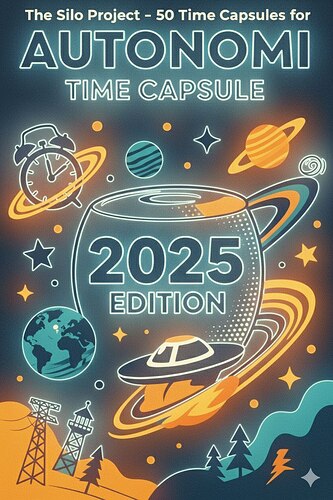In my first attempt at creating an Autonomi Time Capsule, I uploaded a single archive (.zip) containing a screenshot of today’s news (.png) and a text file (.txt) with the Data Address of yesterday’s news. The idea was to preserve daily news in a decentralized, time-proof way, inspired by the AntChain principle, but executed manually. The final goal was to have one ultimate Data Address that links all uploads from start to finish—something that could even be engraved on stainless steel to survive for centuries.
Unfortunately, this first capsule failed due to lost and inaccessible files, which made it impossible to recreate the archive exactly as it was.
Learning from that experience, I am launching The Silo Project. The concept is inspired by the Silo series: rather than relying on a single capsule, I will create 50 independent time capsules, each acting as its own “silo” of preserved data. Each capsule will contain the same kind of archive as the first attempt—screenshots and Data Address text files—so even if some capsules become inaccessible over time, others will survive.
This multi-level backup methodology approach increases resilience and provides multiple opportunities for future generations to access the preserved information. The Silo Project is both an experiment and a contribution to testing the long-term durability of the Autonomi network. Updates will be posted as each capsule is successfully updated.
Goal: 50 time capsules, numbered like Silo1 through Silo50, ensuring redundancy and higher chances of long-term preservation.
Check out the Impossible Futures!
